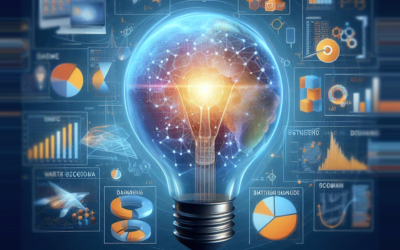Adapting traditional methodologies for the dynamic nearshore landscape often necessitates transitioning from the classic Waterfall to something more fluid. Enter ‘Waterfall-ish,’ where the structure meets agility. This approach is reshaping project management across the nearshore realm, blending familiar Waterfall discipline with newfound flexibility. In this exploration, “from waterfall to waterfall ish: adapting traditional methodologies for the dynamic nearshore landscape”, we will navigate the why and how of integrating this hybrid model, ensuring your project management is as adaptive as the environment it thrives in.
Key Takeaways
- The Waterfall model is traditionally linear and structured, ideal for projects with fixed scopes but faces challenges in dynamic environments, leading to a hybrid approach known as Waterfall-ish which incorporates agile practices for enhanced flexibility.
- Waterfall-ish adapts traditional Waterfall development by introducing flexible phase prioritization, incremental delivery, and embracing agile methodologies for better management of changes and stakeholder feedback.
- Successful implementation of Waterfall-ish in organizations necessitates readiness assessments, gradual transition strategies, leadership support, and the use of both traditional and agile metrics to evaluate project success.
Understanding the Waterfall Model
Emerging from the structured realms of manufacturing and construction, the waterfall model has long been a stalwart of project management. Its linear, sequential nature divides development into isolated events, each requiring formal completion before the next phase begins. This methodology shines brightest in projects where scope, time, and cost are fixed, allowing for comprehensive planning and minimal need for changes once development starts.
However, this rigidity can also be a double-edged sword. The waterfall model’s adherence to a strict sequence may pose challenges in the face of dynamic project environments that require flexibility and adaptability. The concept of Waterfall-ish emerges at this point, merging strengths from both agile and waterfall methodologies to formulate a flexible, iterative project management approach.
The Linear Path of Waterfall
The Waterfall model is a series of cascading phases:
- Requirements
- Design
- System Testing
- Implementation
- Verification/Integration
- Maintenance
Each phase in the development process is distinct and sequential, like steps on a ladder. But there’s a catch – once you’ve climbed a step, there’s no going back. If there’s a design flaw or a need for mid-process changes, you might find yourself starting over. This is because the waterfall approach necessitates the completion of each phase before progressing to the next, making it challenging to adopt mid-process feedback.
Additionally, on this linear trajectory, any delay in tasks or the onset of testing phases can critically disrupt the entire project timeline, resulting in late defect detection. This is where the traditional waterfall model often falls short in the face of modern development challenges, necessitating the exploration of more flexible and responsive methodologies.
Key Principles of Waterfall Methodology
At its core, the waterfall model is founded on extensive planning. Goals and objectives are determined, and system requirements are finalized to establish a clear blueprint that guides the entire project. As each phase is completed, comprehensive documentation ensures smooth information transfer between phases, creating repeatable processes, aiding in project knowledge management, and keeping everyone on the same page.
One of the key principles of the waterfall approach is the delivery of a completed product at the end of the project cycle. This allows for comprehensive and upfront estimations and planning, resulting in predictable outcomes. However, the lack of flexibility and adaptability in this approach can pose challenges in dynamic project environments, leading to the need for a more nuanced approach that embraces the strengths of both waterfall and agile methodologies.
Bridging the Gap: Waterfall-ish for Modern Development
Despite its robustness, the Waterfall model grapples with managing changes, scope adjustments, and updates effectively, posing a considerable drawback in dynamic project environments. Enter Waterfall-ish: an adaptation of the traditional waterfall model that enhances flexibility and better manages these changes.
By incorporating agile practices into the structured waterfall framework, Waterfall-ish presents a new paradigm that offers the stability of waterfall methodologies with the adaptability of the agile process. This innovative approach ensures that project management doesn’t have to be a choice between strict adherence to a plan and the ability to adapt to changing circumstances.
Flexible Prioritization Within Phases
Picture a typical agile development scenario where a product roadmap charts the product’s evolution and provides a framework for establishing and adjusting priorities as the project landscape evolves. This approach can be adapted to enhance phase flexibility within Waterfall models, allowing teams to better manage dynamic project demands.
But this flexibility requires meticulous communication and documentation to manage stakeholder expectations effectively. By distinguishing between project backlog and product backlog, teams can facilitate within-phase adjustments in waterfall projects. Adding to this, the use of quality task management tools and regular team check-ins can ensure that teams clearly understand their tasks and uphold quality standards.
Incremental Nature of Waterfall-ish
While the traditional waterfall model is comprehensive, it results in a working product only at later stages, pushing back feedback and early error detection. Integrating the agile principle of iterative development into Waterfall, however, presents a solution. By introducing multiple incremental steps, teams can deliver valuable components to clients at the end of each phase, supporting a dynamic and incremental delivery process.
This incremental nature of Waterfall-ish, guided by the concept of prioritized work items in a backlog borrowed from Agile, ensures focused and well-prioritized project management. The result? A more fluid, flexible, and adaptable project management approach that is well-suited to the demands of the modern development landscape.
Agile Influences on Traditional Models
In project management, Agile methodologies are progressively influencing traditional approaches by infusing values of flexibility and the capacity for adjustments at any project stage. The Agile Manifesto, which underpins these methodologies, has inspired practices such as iterative development, which became prominent in the 1990s, providing a valuable agile framework for adapting the waterfall model to contemporary development challenges using agile methodology.
However, it’s vital to note that blending Agile into a waterfall environment isn’t a simple on-off switch, but a gradual continuum. It allows organizations to tailor their project delivery models with varying levels of agile practices. To effectively blend these methodologies, it is essential to understand the distinct qualities of each and how they can complement each other within a project’s life cycle.
Embracing an Agile Mindset in Structured Environments
Adopting an Agile mindset within structured environments such as Waterfall can trigger considerable enhancements. It can enhance collaboration by encouraging face-to-face interaction and more frequent communication among team members. An Agile mindset also encourages continuous communication and stakeholder engagement, which can lead to better project outcomes.
Additionally, embracing an Agile mindset within traditional project management settings can enhance flexibility in managing project scope and adapting to changes. By introducing regular feedback loops, Agile allows for continuous releases and adaptability. This can be leveraged in a Waterfall-ish approach to adjust phases based on stakeholder input and project demands.
Agile Practices That Enhance Waterfall
Integrating Agile practices into the Waterfall model can significantly enhance its adaptability and efficiency. For instance, one key principle of Agile—facilitating change and eliminating waste processes—can support continuous improvement and efficiency in the project lifecycle. By integrating continuous customer feedback into waterfall processes, projects can ensure that the product evolves according to user needs, despite the model’s usual upfront requirement gathering approach.
Separating project and product backlogs enables Waterfall projects to prioritize essential features for release while maintaining flexibility for adding or refining features based on feedback or new insights. Moreover, incorporating Agile practices allows for meaningful late decision-making and reprioritization, giving project managers the ability to adjust based on the most recent and relevant information.
Navigating Nearshore Dynamics with Waterfall-ish
Steering through the dynamics of nearshore software development, especially when dealing with complex projects, introduces a unique array of challenges. These include:
- Bridging differences in languages and communication styles
- Managing time zone differences
- Ensuring mutual understanding of expectations and tasks
- Raising concerns about intellectual property rights due to varying laws between countries, necessitating meticulous contract and non-disclosure agreement preparations.
Moreover, projects involving nearshore teams require thorough knowledge of cyber and data security regulations of all involved countries to ensure full regulatory compliance. Addressing these challenges effectively is crucial in leveraging the benefits of nearshore development in a Waterfall-ish environment.
Cross-Functional Teams and Collaboration
Cross-functional agile teams are an integral part of Agile’s emphasis on people and interaction, and they have a significant role in traditional project management as well. Specifically, in nearshore software projects, cross-functional teams composed of diverse skills across business lines, departments, and locations contribute to well-rounded problem-solving and comprehensive coverage in product strategy.
However, effective collaboration in cross-functional teams requires careful management of team composition to balance different perspectives and ensure meritocratic decision-making, preventing unproductive conflicts. To enhance collaboration and efficiency, companies form cross-functional teams with professionals from various departments working in an Agile manner.
Customer Involvement and Feedback Loops
Customer involvement is a crucial aspect of both Agile and Waterfall-ish methodologies. Incorporating customer collaboration, a fundamental Agile practice, into the Waterfall model leads to deliverables that are more closely aligned with customer needs and market conditions.
Real-time collaboration and communication between customers and nearshore development teams can enhance the effectiveness of feedback loops, ensuring that the product evolves according to user needs. Embedding regular feedback cycles into the Waterfall project lifecycle is essential for enabling continuous improvement and adaptation in a nearshore context.
Implementing Waterfall-ish in Your Organization
Successfully transitioning to a Waterfall-ish approach requires careful planning and execution. Organizations can start by:
- Identifying which specific Agile practices are compatible and can be feasibly integrated into their existing traditional waterfall workflows.
- Ensuring that the adoption of Waterfall-ish aligns with the overarching business goals.
- Clearly communicating the benefits and upcoming changes to all stakeholders.
Training and professional development initiatives are crucial to equip personnel with the necessary skills in Agile methodologies, specifically tailored for Waterfall-ish practices, to ensure a smooth transition. Implementing pilot projects is an effective strategy for introducing the Waterfall-ish methodology, as it allows for real-time learning and adjustments prior to a full-scale rollout across the organization.
Assessing Organizational Readiness
Before initiating the Waterfall-ish journey, assessing your organization’s preparedness is crucial. This includes assessing the organizational culture for its compatibility with Waterfall-ish, taking into account openness to change, ongoing learning, and continuous improvement. In addition, it’s vital to evaluate the organization’s current project management processes and technological infrastructure to determine their ability to support collaborative and flexible Waterfall-ish practices.
Understanding the organization’s risk tolerance is key, as Waterfall-ish introduces new risks associated with iterative development and accelerated decision-making. Previous experience with Agile projects and a preparedness to invest in training and support are indicative of an organization’s readiness to adopt Waterfall-ish methodologies successfully.
Steps to Transition
The shift to Waterfall-ish should be considered as a phased process, providing time for teams to adapt and the organization to refine its approach based on feedback. Leadership support is crucial for a successful transition, with a focus on outcomes over processes and a need for engaged leadership in technological decision-making.
Management’s role in the transition is to provide support and remove impediments, ensuring that teams have the resources and autonomy needed to succeed with Waterfall-ish. The ‘envelope method’ is a useful framework for mixing Agile and Waterfall in the same project, consisting of successive layers that insulate each other.
Case Studies: Successful Waterfall-ish Transformations
Globally, companies are successfully tailoring waterfall methodologies to match the evolving needs of the contemporary development landscape. For instance, Mayden, a company specializing in healthcare web applications, embraced Scrum to enhance teamwork, collaboration, and customer value, leading to improved software delivery and market competitiveness.
Another unnamed travel company transitioned from Waterfall to Agile, addressing issues like missed deadlines and poor quality by piloting Agile and assessing its fit for their operations. Conducting post-implementation reviews helps these companies assess stakeholder satisfaction and discrepancies in project outcomes, fostering a culture of continuous improvement.
Measuring Success in a Waterfall-ish Environment
Assessing success in a Waterfall-ish environment necessitates a combination of traditional and Agile metrics. Agile metrics such as work in progress limits and burndown charts can be utilized to predict delivery cadence and manage incremental project delivery. The introduction of Agile practices also increases transparency and visibility of project progress and outcomes, improving project predictability and cost-effectiveness.
Key performance indicators for Waterfall projects include adherence to the project timeline and completion of project phases on schedule. Regular status reports facilitate insights into project health by comparing planned versus actual timelines. Stakeholder satisfaction in Waterfall-ish projects is assessed by how well the final deliverables meet the requirements set at the project’s inception. Tools like surveys and interviews are employed post-delivery to measure stakeholder satisfaction levels and collect feedback.
Summary
Waterfall-ish represents a fresh approach to project management, marrying the structure of the traditional waterfall model with the flexibility and adaptability of Agile. Its successful implementation necessitates careful planning, training, and a gradual transition process. By embracing Agile practices and mindset within structured environments, Waterfall-ish can enhance collaboration, improve project efficiency, and better manage changes in dynamic project landscapes.
Frequently Asked Questions
How do you transition from Waterfall to Agile?
To transition from Waterfall to Agile, you should educate yourself and your team on Agile project management, find the best Agile methods and tools for your team, establish a mindset for Agile transformation, be adaptable to change, and enhance your Agile team’s communication and collaboration. This will help in successfully transforming your project management process from Waterfall to Agile.
What is the traditional waterfall methodology of development?
The traditional waterfall methodology is a well-established project management workflow that progresses sequentially through five stages: requirements, design, implementation, verification, and maintenance. It does not allow for phases to overlap.
What is Waterfall-ish?
Waterfall-ish is a hybrid methodology that combines traditional Waterfall and Agile practices to improve project management flexibility and adaptability.
What are some Agile practices that enhance Waterfall?
Incorporating practices like continuous customer feedback and prioritized work items can greatly improve the adaptability and efficiency of the Waterfall model.





0 Comments